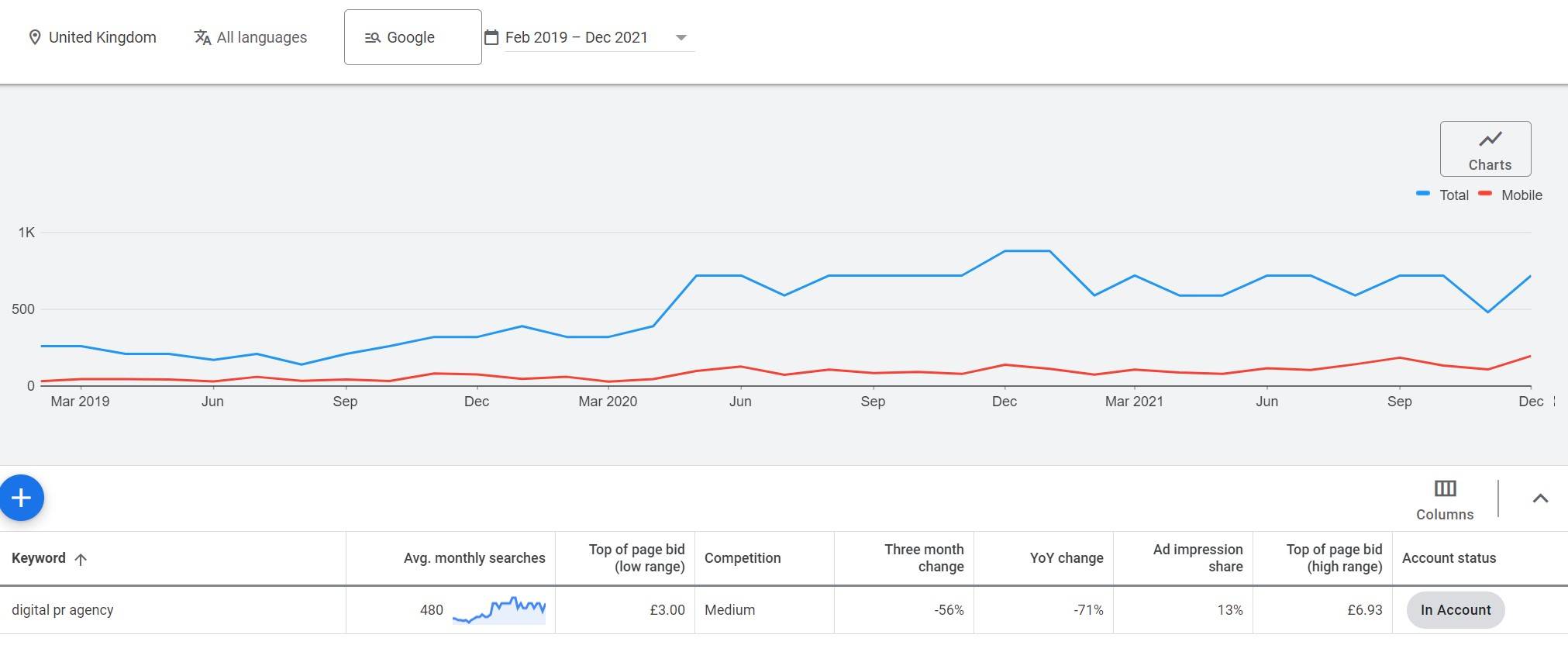Digital PR is probably one of the most popular services that we offer at Cedarwood and we were early to market with this product – starting our offering back when our business began around seven years ago. Back then, Digital PR was referred to as “link building” (they are very different!), certainly wasn’t the buzzword it was today and it was a rare occurrence in a world of paid for link acquisition.
Today, thanks to the rise of Google tightening its link spam algorithms and a number of agencies (and SEO experts) championing the values of Digital PR, we find that EVERYONE is talking about it (even John Mueller!) – but we still find that in many situations when we are approached by clients they can be a little unsure as to what it is and how it differs from traditional PR.
So let’s take a look at what Digital PR is, how it differs from traditional PR and how you can combine tactics from both to deliver a great link acquisition campaign.
What Is Digital PR?
Digital PR is an online form of PR, which essentially looks to promote visibility and awareness for your business through digital platforms and online. Digital PR takes a lot of the elements from traditional PR and puts an online spin on them – so that still includes coverage for your clients, increasing brand awareness and making sure that you land all important links, but with digital PR you really have to consider what is going to land in the online space.
Digital PR is a slightly different skill set because it’s really focuses on online only with offline being a secondary consideration. It’s widely used for businesses that are online first and are looking to gain traction amongst their target audience as well as build those all-important links back to their website.
What Is Traditional PR?
By contrast, traditional PR has more of an offline focus or as you could say a combined focus, think events activation, newspapers, integrated campaigns, tv, radio, newspapers, billboards – everything that you have come to associate with this timeless form of PR. That’s not to say that you can’t combine elements of this for a very effective Digital PR campaign – it’s more that these are what you would traditionally associate with a Digital PR campaign.
Traditional PR doesn’t necessarily focus on attracting a digital presence and as such, for businesses that are online only it can often be seen as missing their target demographic. That said, there is no reason why traditional PR techniques can’t be used effectively to help drive success across Digital PR campaigns.
What Is The Biggest Difference?
The biggest difference between traditional and digital PR is the platform that it’s generally targeted at, with traditional PR focused on a more traditional offline audience, whereas digital PR being targeted at a predominantly online audience. It’s this targeting strategy that also contributes to whether or not one is more effective than the other for your ideal audience.
There are many other differences between traditional and digital PR including:
- Feedback & engagement – due to the advent of online “comment” posts it’s a lot easier to get feedback on your content through Digital PR than it is through traditional PR, this can give you a good insight as to how your content has performed and also inspire you if you are to continue with that type of content in the future
- Audience sizes – although traditional PR can give you a good audience size, the digital world is infinitely larger and digital campaigns can reach an international audience at a much greater scale than a traditional campaign.
- Intent & Interest-Based targeting – one of the main differences between digital and traditional PR is the ways you can target your audience. With Digital PR you have the option to choose between interest and intent-based audiences – that’s the option to actually put your product in front of the user at the time they are searching for it, whereas with traditional PR this is mostly limited to the user’s interest by placing it within a specific magazine or publication
- Purpose – the purpose of the two campaigns is often very different. In a lot of instances, Digital PR is designed to drive visitors and awareness to a website – and in many cases to support SEO through effective and targeted link acquisition. By contrast, traditional PR can be more about brand awareness and driving visibility – it can also be used as a direct sales platform but this is often slightly more difficult to attribute.
- Measurement – Last but not least, one of the main differences between digital and traditional PR is the way that you measure it. Digital PR is in most instances a little easier to measure – you can rack based on link and link quality as well as reach and various other key metrics, traditional PR by contrast is just that little bit more difficult to measure – but it can still be done by coverage, reach etc…
Does This Change The Skill Set?
Many people think that you need a completely different skill set for traditional digital PR and this isn’t entirely true – but it definitely helps to have the online connections and contacts when you are trying to run a digital PR campaign. Digital PR is also incredibly fast paced and there are elements like newsjacking which do require experience and also an understanding of where to go to seek out an effective story – as a result this can become an important skill set to develop if you are looking to make the transition from traditional through to digital PR.
Are Traditional PR Skills Transferable to Digital PR?
100% you can transfer many traditional PR skills over to digital PR very effectively, but it’s important as with any campaign to take the time to understand what the client is trying to achieve with their campaign – and it might be that with digital PR that differs from what a standard traditional PR client is looking to achieve.
There are also a number of super valuable skills that traditional PRs can bring over to digital PR, in particular established journalist relationships – many of whom may now work for digital publications in addition to traditional offline publications and many of whom will have stories that they have written for print published online. In addition, an eye for a good story/angle in addition to a strong press release hook and timing for outreach are all important skills for digital PR which are carried across from traditional PR.
Is Digital PR More Popular Than Traditional PR?
I wouldn’t say that one type of PR is necessarily more popular than the other, but it would be fair to say that digital PR has seen a significant rise in interest over the last 24 months mainly due to its support for SEO and also that it has a proven track record of helping businesses to grow particularly in the online space.
The trend of digital PR took off massively during COVID-19 when businesses were forced online due to physical stores and properties being closed. At this time, people were looking for ways online to market their products and services – predominantly as this is where the audience was – and as such, digital PR took off.
We can see how the growth of digital PR has evolved over time, so it’s not that traditional PR is necessarily less popular, I would rather say that digital PR has evolved to be even more popular than it was before.

Is Digital PR Or Traditional PR Right For My Business?
Choosing the right type of PR for your business plays an important role in getting the most out of your campaign and it’s important to ensure that you understand your target market and which type of PR might be most effective.
If you are looking to attract a traditional audience and grow offline brand awareness and visibility then traditional PR is a great option. By contrast, if you are looking to grow your business online then digital PR is a great choice. To find out more about digital PR and how it could work for you get in touch!









